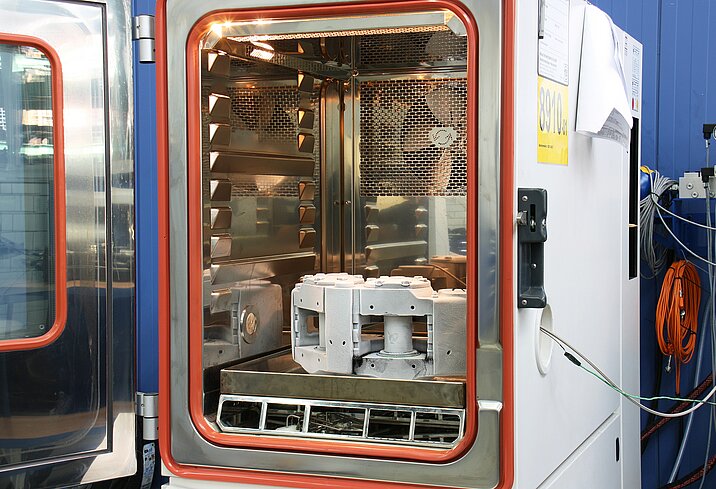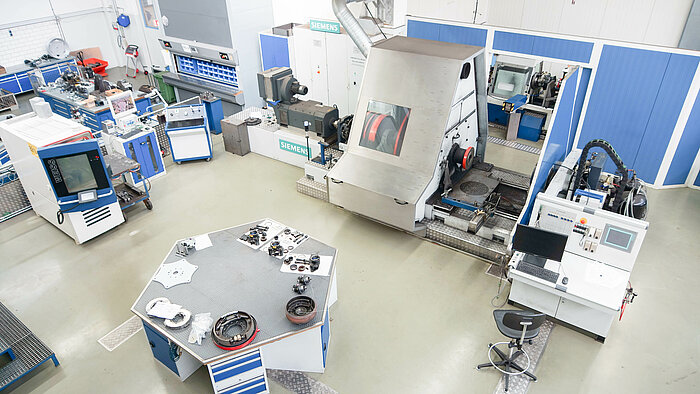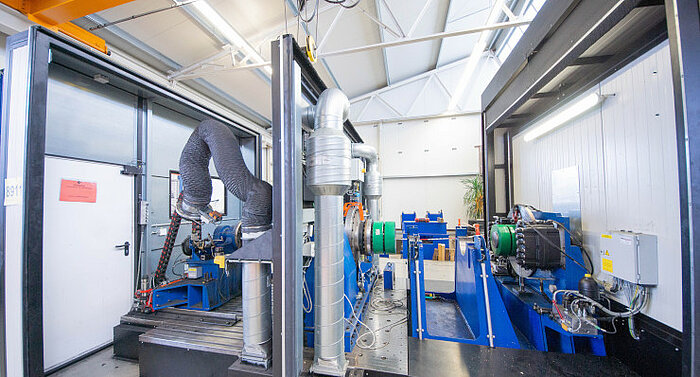
Info from our test department
With the adjustment of a brake to the space conditions in the vehicle, a preselection of friction materials for the brake pads takes place. The thermal stresses acting on the brake during vehicle operation can be anticipated on the flywheel mass test bench. On the one hand, this allows the most suitable friction material for the application to be determined, and on the other hand, the braking performance under real conditions can be determined: If its braking power is rated too small, it will become too warm in use and possibly damaged. If its braking power is rated too high, it will rarely reach its optimum operating temperature. At the Eggstätt site, there are currently three flywheel mass test stands of different sizes. The largest flywheel mass test bench is driven by an asynchronous machine with 500 kW and has a flywheel mass of up to 2,500 kgm². Since we meet certain requirements, we are listed as a test laboratory at TÜV SÜD. TÜV SÜD therefore carries out type tests for approvals on these flywheel mass test stands in cooperation with KNOTT.
A brake is expected to provide many years of service in the vehicle. The stress over the service life of a brake can be simulated on fatigue strength test rigs. In order to be able to carry out the tests within a reasonable period of time, the stress on which the application is based is applied in a condensed form. It is also possible to simulate the consequences of overload or misuse. Failures are documented and compared with previous simulation results. A particularly noteworthy fatigue test stand is the hydro-pulse facility. Since components can be tested here at high frequency, the time lapse is particularly high. This advantage is particularly effective in the fatigue testing of vehicle-connecting parts such as tension ball couplings. The high demands placed on vehicle connecting parts can be seen from the fact that the fatigue strength test is part of the approval of such a component. For this reason, this test bench is also listed with TÜV SÜD.
Environmental influences on our brakes are simulated on special test benches. This includes corrosion resistance in a standardized salt spray or use under extreme ambient temperatures.
Once the brake has been installed in the vehicle, its function can be verified on our roller dynamometer , which is essential at the start of a road test. Because the chassis dynamometer meets the relevant requirements and is registered with the Munich-Upper Bavaria Motor Vehicle Guild, our certified testers are permitted to carry out safety tests for trucks.

